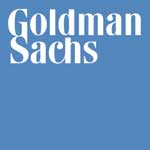
A while back I posted several pieces
here and
here about how an observer could gauge the relative chances of significant healthcare being passed by Congress, simply by looking at the share prices of publicly traded health insurance companies like Cigna, Blue Cross/Blue Shield, Humana, United Healthcare and others. Well, if anyone doubted that Wall Street was actually in a position to influence these things, follow me over the fold for iron clad proof that Wall Street wants reform to fail.
The largest investment bank in the world, Goldman Sachs, recently published a private report to stockholders. In it, they broke down their predictions on what would happen to health insurance company stocks under a number of hypothetical outcomes of the current debate. That document was leaked. Here’s an synopsis of their four scenarios taken straight the pages of their cold calculation:
- No reform (by far the best possible scenario, according to Wall Street). Insurance earnings are projected to increase by 10% from 2010-2019 while stocks rise an additional 59%;
- The “base” scenario deemed most likely to pass by Goldman execs: a version similar to the Senate Finance Bill (no public option). Insurance earnings are projected to increase by 5% from 2010-2019;
- The “bull” scenario (no public option): a more “optimistic” projection “for reform implementation, which might result from moderation of provisions in the current SFC plan, or result from changes prior to the major implementation in 2013.” Earnings are projected to increase by 9.5%;
- The “bear” scenario: a health care reform bill similar to the House version with strict regulations and a public option. Earnings are projected to decrease by 1%.
To the “Street” — those wonderful people who through their greed and carelessness nearly destroyed the US economy and then kept their jobs and outsized bonuses thanks to the largesse of the US taxpayer — the “bear” or “negative” scenario is the one in which Americans are protected from being abused by the insurance industry. The “best” scenario for the Street is the one where no reform at all is passed and insurance stocks rise by 59% over the next 10 years. If stock prices for insurers rise by nearly 6% per year for ten years, you can be sure that will be directly correlated to a similar increase in premiums for you and me. That is if you are lucky enough to have insurance and no pre existing conditions.
This is why the Street and insurers are spending millions on lobbyists and advertising campaigns trying to scare Americans into believing that the public option is some scary socialist or communist takeover. What they really fear is that “bear” scenario wherein their earnings are predicted to fall by 1%. Shameful!
Here’s a link to a Huffington Post article that contains the ACTUAL LEAKED GOLDMAN SACHS DOCUMENT.
 A while back I posted several pieces here and here about how an observer could gauge the relative chances of significant healthcare being passed by Congress, simply by looking at the share prices of publicly traded health insurance companies like Cigna, Blue Cross/Blue Shield, Humana, United Healthcare and others. Well, if anyone doubted that Wall Street was actually in a position to influence these things, follow me over the fold for iron clad proof that Wall Street wants reform to fail.
The largest investment bank in the world, Goldman Sachs, recently published a private report to stockholders. In it, they broke down their predictions on what would happen to health insurance company stocks under a number of hypothetical outcomes of the current debate. That document was leaked. Here’s an synopsis of their four scenarios taken straight the pages of their cold calculation:
A while back I posted several pieces here and here about how an observer could gauge the relative chances of significant healthcare being passed by Congress, simply by looking at the share prices of publicly traded health insurance companies like Cigna, Blue Cross/Blue Shield, Humana, United Healthcare and others. Well, if anyone doubted that Wall Street was actually in a position to influence these things, follow me over the fold for iron clad proof that Wall Street wants reform to fail.
The largest investment bank in the world, Goldman Sachs, recently published a private report to stockholders. In it, they broke down their predictions on what would happen to health insurance company stocks under a number of hypothetical outcomes of the current debate. That document was leaked. Here’s an synopsis of their four scenarios taken straight the pages of their cold calculation:
